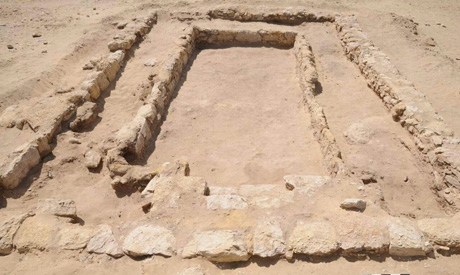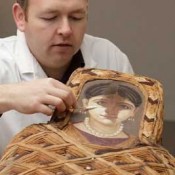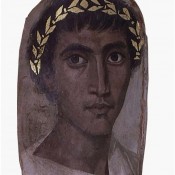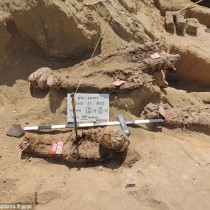A German-Egyptian archaeological mission from the German Archaeological Institute (DAI), headed by Prof. Dr. Cornelia Römer, discovered the first Hellenistic gymnasium ever found in Egypt on the site of Watfa, 5 km east of Qasr Qaroun in the north-western Fayum.
Watfa is the site of the ancient village Philoteris, founded by king Ptolemy II in the 3rd century BCE and named after his second sister Philotera.
Dr. Ayman Ashmawi, Head of the Ancient Egyptian Antiquities Sector said that the gymnasium now discovered shows a large hall for meetings, once adorned with statues, a dining hall and a courtyard in the main building. Beside it, there is a racetrack of nearly 200 metres length, long enough to engage in the typical race over the distance of a stadium (c. 180 metres). Generous gardens surrounded the building to complete an ideal layout of a centre of Greek learning.
Dr. Römer explains that the gymnasia were private foundations by rich people, who wanted their villages to become even more Greek in aspect. There, the young men of the Greek speaking upper class were trained in sports, learned to read and to write, and to enjoy philosophical discussions. All big cities of the Hellenistic world like Athens in Greece, Pergamon and Miletus in Asia Minor, and Pompei in Italy had such gymnasia.
The gymnasia in the Egyptian countryside were built after their pattern; although much smaller, the gymnasion of Watfa clearly shows the impact of Greek life in Egypt, not only in Alexandria, but also in the countryside.
Alexander the Great, she pointed out, had made Egypt part of the hellenistic world, thousands of Greek speaking settlers flocked into the land on the Nile attracted by the new Ptolemaic empire which promised prosperity and peace. In particular in the Delta and in the Fayum new villages were founded, in which the indigenous population lived together with the Greek newcomers.
Such villages were equipped not only with Egyptian temples, but also with Greek sanctuaries. There existed also public baths, an institution very popular in the Greek world. The baths soon became places of social encounter in the villages and meeting points of the Egyptian and Greek speaking inhabitants. Gymnasia as places of Greek culture and lifestile were part of this hellenistic cultural setting.
Inscriptions and papyri had already witnessed the existence of gymnasia in the countryside of the Ptolemaic period; we hear of payments for parts of the main buildings by rich inhabitants of the villages, and of the men, who governed the institution.
At Watfa the first building of this kind has now been discovered. Watfa, ancient Philoteris, was one of the many villages founded under the first Ptolemies in the middle of the 3rd century BC; in the beginning it had c. 1200 inhabitants, two thirds Egyptians, and one third Greek speaking settlers.





